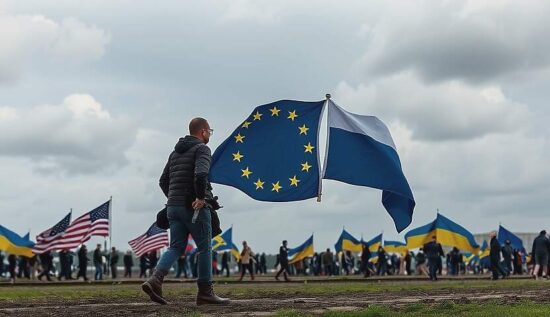Russian President Vladimir Putin spoke with US President Donald Trump on Wednesday, marking the beginning of negotiations in Moscow over the end of the war in Ukraine, as Trump later revealed. According to Bloomberg, European politicians were not informed in advance of the impending phone call between Putin and Trump. Although the US government has repeatedly stated that Washington seeks a lasting solution, the Europeans are concerned that Trump may negotiate an agreement with Putin without the involvement of the EU and Kiev, as Bloomberg reported. For many, the phone call on Wednesday has heightened these concerns.
Trump stated that he is willing to visit Russia and receive Putin in the US and later spoke with Ukrainian President Volodymyr Zelensky to inform him of the conversation. Putin and Trump are likely to meet soon in Saudi Arabia, Trump said later.
Despite Trump’s optimism, it is still unclear whether a peace agreement can be reached, as the Russian President shows no inclination to compromise, according to Bloomberg. However, the news agency believes that the conditions for an agreement on Ukraine are already visible.
Analysts at Bloomberg have identified three possible scenarios for the diplomatic outcome of the military conflict between Moscow and Kiev.
The first and most likely scenario envisions that the areas freed by Russia will remain under Russian control in the foreseeable future, with the possibility of a trade of territories. The Ukrainian-controlled Russian region of Kursk could be the fall of this scenario.
Kiev would receive a kind of security guarantee. The negotiations would focus mainly on how strong these guarantees would be. Since the NATO membership of Ukraine is likely to be ruled out for the time being, the fulfillment of the commitments under these guarantees would depend on the decisions of the future political leadership.
If European states can establish a good connection with Washington, they would try to convince Trump to maintain US support for Kiev long enough for the EU to strengthen its capacities.
The second and ideal scenario for Kiev would be that the US and Europe commit to intervening if Russia does not uphold an agreement. However, even some of the most ardent supporters of Ukraine are cautious due to the risk of a direct conflict with Russia.
Instead, Kiev’s allies could commit to strengthening military aid and reimposing or intensifying sanctions against Russia. They could also help Ukraine strengthen its defense industry and armed forces, which could serve as a deterrent against Russia.
This would pave the way for Ukraine’s potential admission to the EU within the next decade, which would strengthen the eastern flank of the EU.
The third and worst-case scenario for Kiev would involve Trump losing interest in Ukraine’s future before a deal is reached and then halting military and financial aid and leaving the EU to bear the burden.
According to the most likely scenario, European politicians need to establish a good connection with the White House. However, what makes the situation worse for Europeans at the moment is the fact that most daily contacts with the US government have been broken off since Trump’s second inauguration last month, as reported by Bloomberg, citing two officials. As a result, they are reliant on formal phone calls, meetings and public statements.





